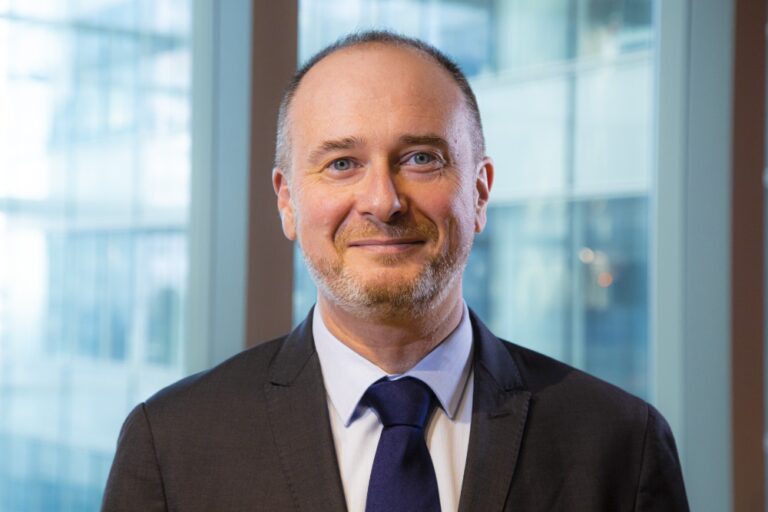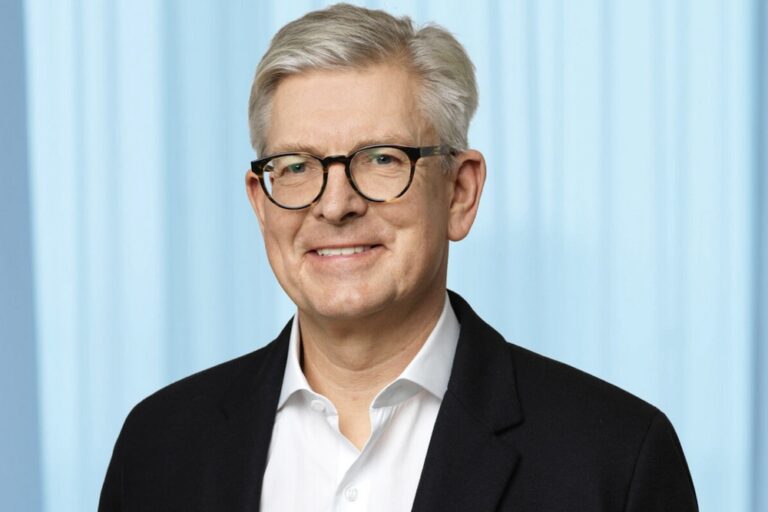Why culture matters: a unique approach to successfully deploying open source technologies
OneWeb relaunches itself – signs comms deals with SpaceX, Eutelsat and Telstra
Ground comms, LEO and space stations are ready for take off
Low earth orbit satellite broadband service OneWeb is covering its bases by commissioning SpaceX, Eutelsat and Telstra in three different types of partnership.
In a new distribution agreement with ‘sister’ satellite operator Eutelsat the two firms will jointly develop geo-stationary and low earth orbit (GEO and LEO respectively) connection services. The partnership is cemented by the fact that as of December 2021 Eutelsat is OneWeb’s second-largest shareholder and the Eutelsat CEO will be on the phone, ‘showcasing synergies’, to the OneWeb operator if there’s any downtime.
“As a shareholder in OneWeb, we are excited [to fold] OneWeb’s connectivity services into our portfolio of solutions,” said Eutelsat CEO Eva Berneke. Eutelsat could use the low orbit to complement its geostationary options for networking the fastest growing markets. The main demand is coming from aero and maritime mobility, fixed data and government services. The most crucial being European mobile operators needing backhaul options and they build 5G networks and telco clouds.
In the second partnership, Australian telco Telstra is to build three dedicated teleports across Australia to provide satellite gateway services for OneWeb in the Southern Hemisphere, as part of a ten-year deal between the two firms. In a report, Telecoms.com defines these as ‘ground based comms’.
Construction of the first teleport, in Darwin Tivendale, begins in March and the installation is due to be live in July. Two additional sites in Charlton Toowoomba and Wangara, Perth, are mooted for late 2022. Each facility will provide instant ground station support for OneWeb’s fleet.
OneWeb’s brief was exacting said Vish Vishwanathan, Telstra America’s VP for wholesale and satellite. However the close partnership forged on construction will stand them in good stead for future installations. “Teleports are complex sites involving access to secure and resilient infrastructure and on-the-ground expertise,” said Vishwanathan.
On Monday March 21 OneWeb clinched an agreement to launch satellites into space again by using SpaceX rockets rather than the Baikonur Cosmodrome, a spaceport located in Khazakstan and leased to Russia. Baikonur was dropped after Khazakstan supported the invasion of Ukraine.
Virgin Media Business Wholesale sends fibre reinforcements to South Wales as locals think global
Infrastructure change as network traffic edges out to regions
Virgin Media Business Wholesale (VMBW), the fixed wholesale connectivity arm of Virgin Media O2 Business, has doubled its fibre capacity to South Wales to 96 fibres as the COVID effect continues to re-shape Britain’s fixed and mobile network infrastructure.
Telcos and operators can buy the new fibre capacity from Virgin Media Business Wholesale via Ethernet or Optical Services or can be bought as Dark Fibre.
The fibre reinforcements were called in as brythonic business has boomed among the hyperscalers, data centre operators and digital creatives of the ‘de cymru’ region better known as South Wales. On the other side of the Severn River from England, South Wales is now viewed as the UK’s second major data centre region after London. Virgin Media Wholesale said this essential connectivity upgrade provides a significant opportunity for those looking to expand their capacity across Wales and the south-east of England and capitalise on the secure and resilient fibre network built by Virgin Media O2 Business. It claims the 190,000km network, largely acquired by acquisition of cable operators and telcos, is the largest in the UK.
The added capacity will support demand from wholesale partners on either side of the estuary and cut delivery times for customer projects, VMBW claimed. An early beneficiary is Vantage Data Centers CWL1, whose 270MW, 135,000 square meter campus near Cardiff is Europe’s largest data centre campus, which has many hyperscale and colocation customers.
“[This] will contribute significantly to our commitment [in] providing future-proofed, highly scalable data centre solutions to customers,” said Justin Jenkins, UK Vantage Data Centers’ COO, “we can now provide a range of new services to multinational systems integrators, as well as the many small and medium enterprises, FinTech, pharmaceutical, government, retail and engineering organisations that underpin Wales’s thriving digital economy.”
Vantage’s CWL1 campus has been a strategic point-of-presence (PoP) on the Virgin Media network for a decade, and the Severn Bridge fibre network upgrade marks a new era in the longstanding connection between the two companies, said Diego Tedesco, Wholesale Fixed Director at Virgin Media O2 Business.
“Last year Virgin Media O2 made a commitment to invest £10bn as part of its mission to upgrade the UK. Building out our fibre from Vantage’s CWL1 campus is one of the significant early investments,” said Tedesco. The fibre upgrade will support the high-speed data transmissions needed for high-performance computing systems, hosting private and hybrid clouds and business apps that need instant response times.
In the UK the M4 motorway provides the physical infrastructure connecting the transporting creative talent with London and Heathrow, the world’s biggest airport. The combination of COVID restrictions and the link to the M4 corridor has created a boom in digital business activity in South Wales. The M4 and the new 96 lane fibre optic data superhighway both run on the Prince of Wales Severn Bridge (see pic) which connects England to Wales.
Broadband Forum’s new 5G specs speed MNOs past a milestone to money making
Now operators edge closer to creating services that people will pay for
The marriage of fixed and wireless networks drew a lot closer when Phase 2 of the Broadband Forum’s recommendations were released, giving operators guidelines for bringing the two together.
Three new specifications mark the completion of Phase 2 of Broadband Forum’s 5G work, giving operators more options for creating services from radio-wireline hybrids that people will want to use. Legacy lines could be running video traffic, business services and community wi-fi, according the Forum.
The new specs relate to access gateway functions, wireless-wireline convergence and residential gateways – all of which give mobile operators new options for using 5G, including the creation of a hybrid sub-network where wireline meets LTE (long term evolution) or NR (new radio).
These latest Broadband Forum convergence standards, passed in March, raise the levels of service that network operators can give subscribers as they transition from a legacy network to the fifth generation. Telecom Italia’s (TIM’s) Rosaria Persico, the principal Broadband Forum delegate, explained how they provide more value.
“The Phase 2 work has delivered multi-session and authentication support for gateways that don’t have 5G options. Now the same user can connect to multiple service networks, rather than a single data network. This is just a foretaste of what will be possible with 5G-Residential Gateways,” said Persico.
The specification TR-456 Issue 2 sets up multiplex multiple sessions between the 5G-Residental Gateway and Access Gateway Function on top of the customer VLAN. This enables each session to be unique in terms of User Plane Functions (UPFs) selection. The exciting upshot is that operators can place video traffic, business traffic or community Wi-Fi all on their own wireline connection with different policies for each.
The specification also expands support for old fashioned customer premises equipment so they can get multi-session support and ‘expanded legacy authentication models’. Other operational aspects addressed include maximum transmission unit handling, more reliable NAS transport and better quality of service.
“Fixed operators can deploy fifth generation technology confidently,” said Jonathan Newton, principal network architect at Vodafone’s Fixed Access Centre of Excellence. “This important work makes better use of fixed and mobile assets, while creating the potential for new converged services.”
Hybrid-access, another key enabler from TR-470 Issue 2, is based on the Residential Gateway with dual access to PON or DSL on the wireline side and 5G or LTE on the wireless side. The LTE support is critical as the operator can create and manage logical sessions that use existing network coverage, even if the 5G radio deployment is not complete yet.
Broadband Forum TR-124 Issue 7 adds multi-access support and specifies requirements for the Residential Gateways connected to the 5G System which allow operators to maximise throughput, redundancy, and reliability.
More details here
PTI to buy 1,226 towers from Cellnex Telecom to ‘catalyse improved coverage’ for all French carriers
Phoenix Tower International (PTI) has completed a definitive agreement with Cellnex Telecom to acquire 1,226 telecommunications sites in ‘very dense’ (AKA urban) areas in France. The deal, subject to approval from the French Competition Authority (FCA), includes French operator SFR as a second major client. PTI is also in a joint venture with Bouygues Telecom which would see it acquire 2,000 sites in urban areas. Both deals are subject to legal precedents created by the FCA’s ruling on Cellnex’ acquisition of Hivory.
France needs Phoenix
These new acquisitions, along with its previously announced build programme with Bouygues Telecom, have given PTI 5,000 sites to own and operate in France, making it one of the largest independent wireless infrastructure providers in the country. “With these transactions and our recent closing of more towers in the French West Indies, PTI expands its presence in France, one of the most dynamic telecom markets in Europe,” said Dagan Kasavana, PTI’s CEO. “Its growth will continue to create the coverage needed by all French wireless operators across the country.”
Catalyst for coverage
Tim Culver, executive chairman of PTI, said these tower acquisitions strengthen the independent tower model in France which will be a “catalyst for improved coverage for all carriers”. PTI and its subsidiaries own and operate over 18,000 telecom towers throughout Europe, the United States, Latin America and the Caribbean. In Europe, PTI operates mainly in France, Italy, Ireland, Malta and Cyprus. PTI was founded in 2013 and its investors include funds managed by Blackstone and various members of its management team. It is headquartered in Boca Raton, Florida.
Cellnex has 130,000 sites
If its planned rollouts are included, Cellnex has a portfolio of at least 130,000 sites in Spain, Italy, the Netherlands, France, Switzerland, the UK, Ireland, Portugal, Austria, Denmark, Sweden and Poland. Cellnex’s business is structured in four major areas: telecommunication infrastructures services; audiovisual broadcasting networks; security and emergency service networks and systems for smart urban infrastructure and services management.
GitOps, developers’ experience and security as code are increasingly critical for telcos
Philippe Ensarguet*, Group CTO at Orange Business Services, explained why in an interview at MWC.
Many telcos have a handle on CI/CD/CT – continuous integration, delivery or deployment, testing as part of their DevOp adoption. Now, according to Ensarguet, they need to get to grips with GitOps and continuous deployment, continuous operations (CD/CO) – that is, move the methodology further along the delivery pipeline, which involves moving from a prescriptive to declarative model.
Ensarguet explained that as data centres, networks and storage become “more or less turn fully software” his biggest concern is how to make all employees affected by this shift “more effective, more productive”. A key strand is changing from a prescriptive way of implementing things to declarative, which supports full automation.
The declarative approach is coming to the fore as companies, which typically started their journey to the cloud with the lift and shift approach, move to cloud native to get the best out of the infrastructure. As Ensarguet explained, “If you rely mainly on the prescriptive approach, the day you want to move into production and scale up the number of applications you implement… you have to manage it purely with humans and you hit the wall on scalability.
“If you are not able to automate longer or deeper than with the CI/CD, then you have no lever to manage the scaling – and that’s critical to the whole thing.”
Ensarguet added, “This is not about you or me typing the command on the console; it’s about adding an orchestrator that is constantly assessing the level of working within the infrastructure and trying to figure out if there is a difference between what is held in the [Git as the] source of trust – the code of the declarative burden – and what is running in production. It’s all about this reconciliation loop that checks the desired state”.
Moving beyond CI/CD/CT
Alexis Richardson, Founder and CEO of Weaveworks, coined the term GitOps (watch his explanatory video here). It began life in 2017 as a way to manage Kubernetes clusters and application delivery. It uses a reconciliation loop picks up discrepancies between the encoded desired state or source of truth, then reconcilers take appropriate action, depending on the nature of the divergence, such as updating or undoing [rolling back] the step that created the issue.
Git developers in the delivery pipelines submit pull requests, which modify the state of the Git repository. Once the proposed modifications have been verified and merged, then the live infrastructure is synched with the it. This speeds and streamlines deployment of applications and operations tasks to Kubernetes – and ensures that any system’s cloud infrastructure can be reproduced immediately, based on the Git repository’s single source of truth.
Ensarguet stressed: “The topic of developers’ experience for me is a very strong. It has to be…Today the networking vendor or the telco vendor ecosystem must have 100% production-grade, secure blah, blah in the core. These things are table stakes; differentiation will depend on other things. The company that can bring a global experience to the market that makes the development teams productive – very fast, in a smooth way, with an approach you can scale across the company – will have a game changer.”
He continued, “A second gamechanger is if [vendor] contributors can reach lower, to the cognitive load of the team that implements services. A key issue is for us is how fast we can achieve operations to implementation?”
He added, “Orange Business Services’ case we are a network operator but also a digital company and IT integrator. When we have to deploy a private network and end-to-end services for IoT or whatever other use cases, It’s a part of the telco play, but also a part of IT and digital. This is why the story around developer experience is very, very important.”
In 2021, 41% of Orange group’s revenue and activities come from digital, IT and integration services. This is expected to rise to 55% by 2025.
Security at speed and scale
Ensarguet also highlighted security as code as a critical factor. It maps how changes to code and infrastructure are made to DevOps tools and workflows, and identifies where to implement security checks, tests and gates without incurring unnecessary cost or delay.
It is also a way of codifying security and policy decisions, and socialising [sharing] them with other teams as a fast, robust way of implementing security testing and scans in the CI/CD pipeline where they automatically and continuously detect vulnerabilities and bugs.
Policy as a code is intrinsic to security as a code. “What’s more asset-critical than the security of your services and reputation?,” Ensarguet asked. “With policy as code, we will consider the implementation of verification control – who can access what, on which machine, on which clusters and so on. If you can express it by code, you get all the benefits in addition to those we talked about [with GitOps].
“It drives what I call trusted application delivery if you can add the benefits of CI/CO to policy as code – covering, for instance, role-based access control, role binding and who can do what on the application cluster… you can apply very regulated or highly constrained [conditions], because you’re able to prove the security rules that are running on your infrastructure.”
Open Policy Agent
From Ensarguet’s point of view, the Open Policy Agent (OPA) standard is at the heart of policy and service as a code. OPA is anopen-source engine that provides a way of declaratively writing policies as code and then using those policies as part of a decision-making process.
Work began on the OPA in 2016 with the aim of unifying policy enforcement across different technologies and systems. OPA was accepted as a Cloud Native Computing Foundation (CNCF) project in 2018 and attained Graduated project status. Now it is used by Big Tech players. For instance, Netflix uses OPA to control access to its internal API resources. Cloudflare, Pinterest and others use OPA to enforce policies on their platforms such as Kubernetes clusters.
Ensarguet credits Styra’s OPA-based product with boosting interest in this area, and he said it has resulted in many other companies striving to supportpolicy as a code. “It’s so interesting because, for example, take the usual suspects we mentioned; [policy as a code] means that the level of verification and checking is definitively a big step up in terms of quality and reliability at a scale that was not previously possible.”
A trigger for the industry at large
Ensarguet continued, “All the people here today – those working on the core network are software, based on open source or open standards. For me, it’s the trigger for this industry – it’s happened for digital and IT, and it’s more or less underpinning the network.”
Progress was demonstrated under the auspices of the O-RAN Alliance at MWC, where, as Ensarguet explained, “The Big Five operators in Europe [Deutsche Telekom, Orange, Telefonica, TIM and Vodafone] and Mavenir [plus Ericsson and Nokia] implemented one of the of the first telco cloud-run services.
“We have different operators but a common stack and we are able to implement services to run on the top. Before it was always a black box from the usual vendors, now we’re moving forward with disaggregation and recomposition is not done not by a closed or black box, but by software, APIs, open standards and open source.
“It’s a question of convergence and the current business space needs us to accelerate. We have a unique conversion case around the cloud-native and the cloud story. Whether you’re doing IT, digital network or telco, the stack is converging. For a company like us it means tomorrow we will have a different operational model to run network services, digital services, or IT services. For us it’s a question of productivity and efficiency [for] our customers.”
Meeting market needs
He concluded, “I think it’s what the market needs. It will be a tough, long journey because honestly, if you want a concrete implementation, fine, but we need to do more than shuffle projects. We want the company to be able to run 50, 60 or 70% of all our projects in this model. I’m truly confident it will happen, but I can’t give you a date.”
He added, “The world was very static and mostly we were able to do what we called forecasting. With such an intense, dynamic, high pressure business today, our ecosystem is so dynamic… we are trying to do is now-casting – trying to understand what’s happening now, considering we have an explosion of areas to manage.
“At the moment, if we want to do our job the best it can be done, the limiting part is that the number of hours we are able to spend doing it. We want more digital. We want OT [operational tech] to match the IT world but there will be an explosion of devices and we will have to manage the explosion of data. We will have to implement, release, manage and secure more and more applications and services.”
Philippe Ensarguet won Mobile Europe’s Trailblazer CTO of the Year Award 2021 and will be giving the closing keynote speech at our free-to-attend Telco to Techco event on 30 March 2022. His subject is Leveraging new revenue streams beyond connectivity.
UK government says telco inventors and tech investors can meet in the UKTIN
But will projects see the green light or choke on red tape?
The UK government is creating a new publicly funded body, the UK Telecoms Innovation Network (UKTIN), which it claims will make the UK “a world-leading centre for telecoms innovation”. UKTIN is intended as an information point for telecoms industry players needing funding or test facilities for research and development. This, the government hopes, will foster collaboration between technology companies and catalyse new technological developments for UK mobile and broadband networks.
Boot up the UKTIN
There is also a competition in which organisations can apply to get the UKTIN centre up and running, for which up to £10m funding is available. The idea is to help inventors develop their products, gain better access to telecoms markets and drive exports abroad.
“The primary aim of the funding for the UKTIN will be to set up and deliver a body which will support innovative new companies and the wider telecoms ecosystem to access and navigate R&D funding and facilities, as well as to provide them with the requisite technical support to grow their businesses and to develop their products and solutions,” said the governmental release.
There’s a prize if your luck’s in
This competition fulfils ambitions set out in the 5G Supply Chain Diversification Strategy and recommendations made by the Telecoms Diversification Taskforce. According to new independent figures from ThinkBroadband two-thirds of UK homes and businesses can now access lightning-fast gigabit broadband – although that is a contentious claim among many UK consumers that Mobile Europe has contacted. The UKTIN will be run by a consortium of organisations with telecoms expertise and will support knowledge sharing and collaboration on open systems, namely Open RAN, which is in need of new vendors to support the desired ‘supply chain of diversification’.
With Open RAN you’re quids-in?
According to City AM, which informs investors in London’s financial centre, OpenRan “will increase competition, drive up the quality of products and services and reduce the UK’s current reliance on a small number of international suppliers.” However, telecoms industry insiders have decried these over simplifications. “It is not Open RAN that saves money, it is what you do with Open RAN that [saves cash],” said Geoff Hollingworth chief marketing officer for Open RAN specialist Rakuten Symphony, in a recent LinkedIn blog post.
Listen to Rakuten
“You cannot get to industrialised automation at software component level without it. You cannot diversify supply chain with monolithic single source delivery,” said Hollingworth, “But if you truly want that end to end zero touch provisioning and operation, you have to be able to manage it and operate it with software and data not people and paper.” Open RAN saves money and it doesn’t doesn’t save money, both claims are true, said Hollingworth. “Let’s stop and instead ask How do I start running a better business?“
Time for consort in
“This is about making the UK the best place in the world to develop rapid and seamless new technology for the digital networks that will power our economy well into the 21st century,” said the government’s Digital Infrastructure Minister Julia Lopez.
The UKTIN is expected to be up and running by the end of the year. The winning consortium will be announced in summer.
Safaricom launches business services to Kenya’s booming enterprise sector
Kenya to roar back as one of Africa’s fastest growing economies
Kenyan operator Safaricom is moving upmarket in its latest marketing campaign with services that aim to cater for the needs of enterprises and public service organisations. Before the pandemic Kenya had one of the fastest growing economies in Africa and has the third largest GDP on the continent. In 2021 as a whole, gross domestic product (GDP) is expected to grow by 5 per cent, one of the faster recoveries among Sub-Saharan African countries, according to the World Bank. Overall economic performance is expected to be robust at 4.9 per cent per year in 2022-23, similar to the pre-pandemic pace, which averaged 5 per cent a year from 2010 to 2019.
Dawn of great things for Kenya
“Kenya’s economy has shown considerable resilience to the enormous shock of the pandemic and this year is expected to post one of the stronger growth rebounds in the region thanks to diversified sources of growth and sound economic policies and management,” said Keith Hansen, World Bank’ country director for Kenya. “However, poverty has increased and the buffers and coping mechanisms of households, firms and the public finances have been depleted.”
New skills to apply
The telco is using its newly acquired skills in connecting people and computers to move into the enterprise sector, says Kenya’s The Star newspaper. The time to move up the value chain has arrived because the telco developed a portfolio of offerings including cloud computing, cyber security and the internet of things (IoT), all of which can be underpinned by Safaricom’s IT consulting services.
Manufacturing could use digits
Safaricom needs to become a technology company in order to take on a bigger role in digitising businesses in sectors such as education, health and manufacturing, said its CEO. “As Kenya’s digital economy continues to expand across various sectors, we are well prepared to provide matching tech solutions that will meet the digital trends and opportunities for large, small and medium sized enterprises,” said Safaricom CEO Peter Ndegwa. These SMEs all need to digitise their businesses in order transform areas such as fleet management, storage of information, disaster recovery and remote tracking of various assets, said Ndegwa.
Safaricom’s long term strategy
“This aligns with our long-term strategy to offer technology-based solutions that ensure everyone has the capacity to participate and thrive in the digital economy as we seek to become a purpose-led technology company,” Ndegwa said. Technology has changed the way businesses are run, said Safaricom chief enterprise business officer Kris Senanu, and it will continue to do so. “Cloud computing offers many options for a business from running efficient processes to disaster recovery options,” said Senanu said.
Kenya could use some clouds
Last year Kenya’s Communications Authority (CA) and the Kenya National Bureau of Statistics (KNBS) found that 35.6 per cent of public sector institutions use cloud computing services but only 22.9 per cent of private businesses do. Possibly this is because Cyber-security is perceived as a major threat, with the CA reporting 70 million cyber threats in the first quarter of the 2021-2022 financial year. One of Safaricom’s new objectives is to overcome these fear and a principal business offering is cyber security.
Telematics pilot
Recently, Safaricom announced the successful pilot of its telematics system for vehicle tracking. By installing smart sensors in two East African Classic Rally vehicles that continuously relayed data to a connected digital platform, the telco proved the resilience, elasticity and ubiquity of its telematics smart tracking system.
Three best practices for optimising your mediation programme
Sponsored: The lawful interception and mediation programmes that communications service providers (CSPs) are mandated to integrate into their platforms fulfil a social responsibility as well as a legal one
Providing robust, secure data turnover and chain of evidence to law enforcement agencies (LEAs) and the intelligence community (IC) is critical for justice and public safety. At the same time, properly securing and executing warrants or other legal authorizations is a prerequisite for protecting subscribers’ legal rights to privacy. CSPs must address these conflicting requirements in the context of fiscal concerns to satisfy both internal and external stakeholders.
This combination of legal, societal, and efficiency requirements placed on mediation programs creates a distinct set of challenges. CSPs must optimize the technology platforms for lawful interception and mediation, as well as the associated processes, to fulfil their responsibilities, protect themselves from liability, and meet budgetary imperatives. The best practices discussed here can help guide those efforts.
Best Practice #1: Formalize Processes at the Core of the Mediation Program
Formalizing and documenting the processes associated with mediation platforms helps capture and operationalize internal as well as external expertise. In day-to-day operations, this supports repeatability and efficiency and allows the provider to support rapid resolution of any issues that arise.
For example, proper access to, and authority over, the environment helps teams identify and resolve incidents before they interfere with data interception and turnover, reducing the need to assess and remediate individual incidents as they arise. Likewise, formal guidelines should specify when an issue needs to be escalated internally or to the platform vendor to drive further efficiencies.
SS8 engages with CSPs to help develop those processes as well as guide the implementation of the technologies needed to support them. This work helps increase the efficiency of the CSP’s internal mediation operations as well as accelerate joint resolution of issues that require our involvement. SS8’s support organization has reduced the duration of our clients’ average case life cycle by 50% in the past two years, and improvement in this area is an ongoing imperative.
Best Practice #2: Dedicate the Right Skill Sets
Optimizing a mediation program requires the right team resources to administer and support the associated technology. The skill sets required are highly distinct from those of general IT resources, with specialized expertise needed in areas such as call processing, connectivity, and signal flow. These requirements reveal the shortcomings of treating mediation as a subset of general IT. Instead, CSPs should encourage specialization by recruiting and training team members with specific backgrounds that align with the mediation program requirements.
In addition to optimizing mediation platforms and operations, CSP subject matter experts facilitate deep integration with SS8 engineering resources. This collaborative engagement provides both tactical and strategic advantages to CSPs. It provides internal teams with daily, open-ended expertise that keeps mediation running smoothly and accelerates the time to resolution for issues that arise. From a broader perspective, SS8‘s comprehensive knowledge of, and perspective on, the industry benefits CSPs as they integrate mediation strategies into their technology roadmaps.
Best Practice #3: Create a Culture of Constant Evolution
A rapid and constant state of innovation is a hallmark of the telecommunications industry. To manage this perpetual change, CSPs must anticipate and prepare for the impact any new capability or component will have on their mediation function. SS8 is constantly engaged in helping customers update processes and create test scenarios to accommodate these requirements, drawing on broad industry experience to tailor general requirements to the needs of specific customers. That involvement helps expand relevant skill sets within the CSP, improve the efficiency of adoption, and guard against shortcomings in implementation.
The CSP’s technical training function is instrumental to keep pace with this evolution of technologies and to prepare the mediation teams. SS8 is at the forefront of industry developments, with deep insight into implementations of lawful intercept and mediation at every scale and across international jurisdictions. This gives our customers early access to emerging technical information that prepares them to thoroughly support new architectures and capabilities.
CSPs regularly engage with SS8 client teams to check the status and health of their mediation programs and identify optimization opportunities. Quarterly business reviews provide a more in-depth, strategic assessment of emerging capabilities that can support new technology and service offerings, giving CSPs a dynamic and proactive perspective that helps ensure stability in the face of change.
Conclusion
Maintaining lawful interception and mediation platforms is a prerequisite for CSPs to meet legal, societal, and business requirements. Success depends on creating and adhering to effective standards and procedures, engaging the right team resources to, and embracing constant change. SS8 solves for this entire spectrum of needs, drawing on more than two decades of industry leadership to help customers meet current and future requirements.
About the authors


Ericsson board backs CEO Ekholm as investigation into Iraq scandal begins
Governance advisor Glass Lewis wants Ekholm to be removed
Ericsson chairman Ronnie Leten has disclosed that a comprehensive review over the company’s conduct relating to Iraq, and how it was subsequently addressed, is under way.
The review will be led by its new chief legal officer Scott Dresser, previously Veon’s general counsel for the last eight years. Dresser’s predecessor Xavier Dedullen was Ericcson’s chief legal officer from 2018, during the time of the alleged malpractice.
Ericsson has been mired in a scandal in recent weeks over potential payments to the Islamic State in Iraq and failing to fully disclose details of its investigation the US Department of Justice (DoJ) as part of a 2019 agreement. In 2019, Ericsson agreed to pay $1 billion to settle a US case, one of the largest financial penalties ever for corporate fraud.
New allegations then emerged. According to the International Consortium of Investigative Journalists (ICIJ) Ericsson asked terror group Islamic State for permission to work in Iraq and Syria and to work in an ISIS-controlled city. The telco equipment maker then paid protection money to smuggle its equipment through ISIS-held zones on a route known as The Speedway, according to an internal Ericsson probe.
The report, obtained by the ICIJ, reveals Ericsson paid out tens of millions of dollars in suspicious transactions in Iraq, financing slush funds, trips abroad for Swedish defence officials, payoffs to executives at customers and possibly terrorists. These documents are the basis of ICIJ’s Ericsson List investigation.
“The Company continues to coordinate with the DOJ and other relevant authorities,” said Ericsson chairman Leten. Chief executive officer Borje Ekholm, who has been criticised for not disclosing its probe into corruption in Iraq, has the full confidence of the board, said Leten. However, US proxy governance advisory service firm Glass Lewis has recommended shareholders vote to remove Ekholm from the board ahead of the company’s annual general meeting on March 29.












